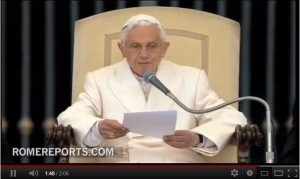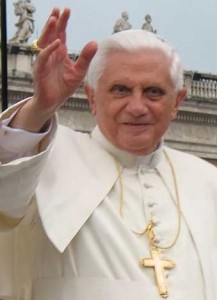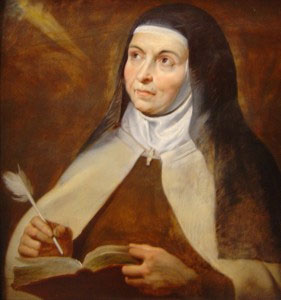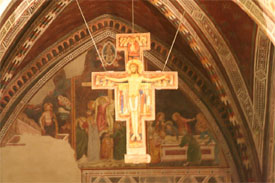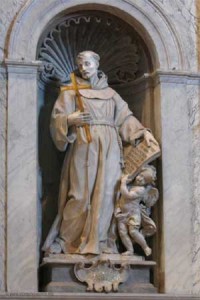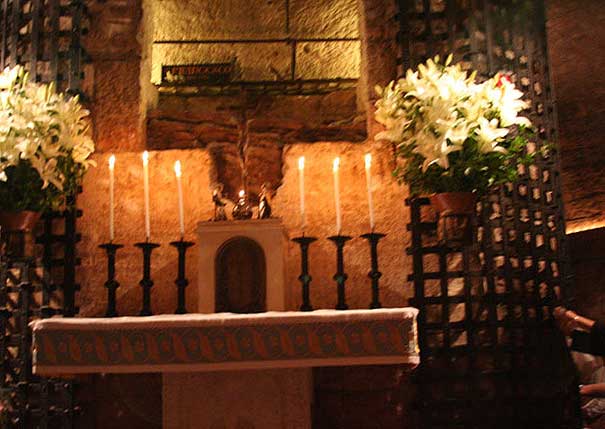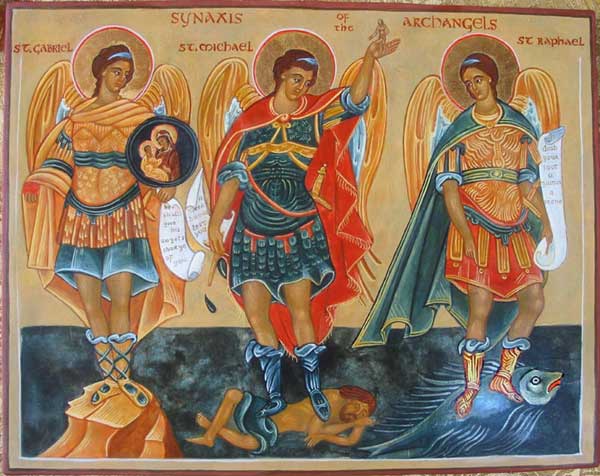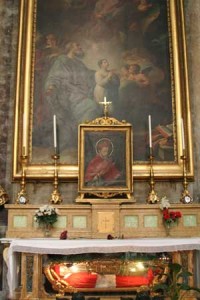From Vatican Radio:
[powerpress]
“In a world where individualism seems to regulate relationships between people, rendering them increasingly fragile, faith calls us to be people of God, to be Church, and bearers of God’s love and communion for all mankind”, said Pope Benedict XVI Wednesday as he continued his general audience catechesis on the ‘Act of Faith’, more familiarly known as the ‘Creed’. Emer McCarthy reports:
Despite foreboding skies and sharp temperatures, the audience was held in St Peter’s square. In off the cuff comments to the thousands who withstood the drizzle huddled under umbrellas to hear the Pope’s words, Benedict XVI noted ‘it could be worse’.
Last week the Pope had spoken of how we have seen that faith is something intensely personal: a gift of God which transforms and enriches our life. But, he asked this Wednesday: “If faith is of a purely personal, individual character? Does it only affect me personally? Do I live my faith alone?â€
In comments in Italian Benedict XVI said : “The answer is found in Baptism, when the priest asks the person to be baptized if he believes in God the Father, Jesus His only Son and the Holy Spirit. The “I do” with which we answer “is not the result of my solitary reflection, it is not the product of my own thoughts, but it is the result of a relationship, a dialogue in which there is a listening, and receiving and response; it is communicating with Jesus that takes me out of the “I” that is enclosed in on myself to open up to the love of God the Father. It is like a rebirth in which I find myself united not only Jesus, but also all those who have walked and walk on the same path; and this new birth, which begins with Baptism, continues throughout the course of my existence. I can not build my personal faith in a private dialogue with Jesus, because faith is given to me by God through a community of believers, the Church, and I a become part of the multitude of believers in a community that is not only sociological, but rooted in the eternal love of God. ”
Tags: nicene creed, pope benedict xvi, year of faith
This entry was posted on Wednesday, October 31st, 2012 at 5:15 am
You can follow any responses to this entry through the RSS 2.0 feed.
(Vatican Radio) On Wednesday Pope Benedict XVI began the second installment in his general audience catechesis on faith, by putting a series of questions to the thousands of pilgrims and visitors to St Peter’s Square. He asked them: What is faith? Does faith still make sense in a world where science and technology have opened new horizons that were, until recently, unthinkable? What does it mean to believe today? Emer McCarthy reports
[powerpress]
These “unrelenting†questions, he told them, are typical of the world today of “a certain kind of culture, has educated us to move only within the horizon of things, of the feasible, to believe only what we can see and touch with our hands. On the other hand, the number of people who feel disoriented is growing and, in seeking to go beyond a purely horizontal reality, they are willing to believe anything and its direct oppositeâ€.
But, added the Pope, these questions also reveal that despite the “greatness†of our human discoveries, we need and want more than the simply tangible. We need and are looking for “love, meaning and hope, a sure foundation, a solid ground to help us live with an authentic sense even moments of crisis, darkness, difficulties and daily problems. Faith gives us just that: it is a confident trust in a “You”, that is Godâ€.
Below a Vatican Radio translation of the Holy Father’s general audience catechesis:
Dear Brothers and Sisters,
last Wednesday with the start of the Year of Faith, I began a new series of catechesis on faith. Today I would like to reflect with you on an elementary question: What is faith? Does faith still make sense in a world where science and technology have opened new horizons that were, until recently, unthinkable? What does it mean to believe today? In fact, in our time what we need is a renewed faith education, which includes a certain awareness of its truth and the events of salvation, but that mainly arises from a real encounter with God in Jesus Christ, from loving Him, trusting him, so that our entire life is involved.Today, along with many signs of good, a sort of spiritual desert is growing around us. Sometimes, the events we hear about in the news every day, give us the feeling that the world is not projected toward building a more fraternal and peaceful community; the very ideas of progress and well-being show their darker shadows. Despite the greatness of the discoveries of science and the breakthroughs of technology, today man does not seem to have truly become freer, more humane; there are still many forms of exploitation, manipulation, violence, oppression, injustice … Moreover a certain kind of culture, has educated us to move only within the horizon of things, of the feasible, to believe only what we can see and touch with our hands. On the other hand, the number of people who feel disoriented is growing and, in seeking to go beyond a purely horizontal reality, they are willing to believe anything and its direct opposite. In this context, some fundamental questions emerge, which are much more concrete than they appear at first sight: What is the meaning of life? Is there a future for the man, for us and for future generations? Where should we direct the choices of our freedom for a successful and happy life? What awaits us beyond the threshold of death? (more…)
Tags: pope benedict xvi, year of faith
This entry was posted on Wednesday, October 24th, 2012 at 9:40 am
You can follow any responses to this entry through the RSS 2.0 feed.
TERESA OF AVILA: CONTEMPLATIVE AND INDUSTRIOUS
VATICAN CITY, 2 FEB 2011 (vatican.va) –
Dear Brothers and Sisters,
In the course of the Catecheses that I have chosen to dedicate to the Fathers of the Church and to great theologians and women of the Middle Ages I have also had the opportunity to reflect on certain Saints proclaimed Doctors of the Church on account of the eminence of their teaching.
Today I would like to begin a brief series of meetings to complete the presentation on the Doctors of the Church and I am beginning with a Saint who is one of the peaks of Christian spirituality of all time — St Teresa of Avila [also known as St Teresa of Jesus].
St Teresa, whose name was Teresa de Cepeda y Ahumada, was born in Avila, Spain, in 1515. In her autobiography she mentions some details of her childhood: she was born into a large family, her “father and mother, who were devout and feared Godâ€, into a large family. She had three sisters and nine brothers.
While she was still a child and not yet nine years old she had the opportunity to read the lives of several Martyrs which inspired in her such a longing for martyrdom that she briefly ran away from home in order to die a Martyr’s death and to go to Heaven (cf. Vida, [Life], 1, 4); “I want to see Godâ€, the little girl told her parents.
A few years later Teresa was to speak of her childhood reading and to state that she had discovered in it the way of truth which she sums up in two fundamental principles.
On the one hand was the fact that “all things of this world will pass away†while on the other God alone is “for ever, ever, everâ€, a topic that recurs in her best known poem: “Let nothing disturb you, Let nothing frighten you, All things are passing away: God never changes. Patience obtains all things. Whoever has God lacks nothing; God alone sufficesâ€. She was about 12 years old when her mother died and she implored the Virgin Most Holy to be her mother (cf. Vida, I, 7).
If in her adolescence the reading of profane books had led to the distractions of a worldly life, her experience as a pupil of the Augustinian nuns of Santa MarÃa de las Gracias de Avila and her reading of spiritual books, especially the classics of Franciscan spirituality, introduced her to recollection and prayer.
When she was 20 she entered the Carmelite Monastery of the Incarnation, also in Avila. In her religious life she took the name “Teresa of Jesusâ€. Three years later she fell seriously ill, so ill that she remained in a coma for four days, looking as if she were dead (cf. Vida, 5, 9).
In the fight against her own illnesses too the Saint saw the combat against weaknesses and the resistance to God’s call: “I wished to liveâ€, she wrote, “but I saw clearly that I was not living, but rather wrestling with the shadow of death; there was no one to give me life, and I was not able to take it. He who could have given it to me had good reasons for not coming to my aid, seeing that he had brought me back to himself so many times, and I as often had left him†(Vida, 7, 8).
In 1543 she lost the closeness of her relatives; her father died and all her siblings, one after another, emigrated to America. In Lent 1554, when she was 39 years old, Teresa reached the climax of her struggle against her own weaknesses. The fortuitous discovery of the statue of “a Christ most grievously woundedâ€, left a deep mark on her life (cf. Vida, 9).
The Saint, who in that period felt deeply in tune with the St Augustine of the Confessions, thus describes the decisive day of her mystical experience: “and… a feeling of the presence of God would come over me unexpectedly, so that I could in no wise doubt either that he was within me, or that I was wholly absorbed in him†(Vida, 10, 1).
Parallel to her inner development, the Saint began in practice to realize her ideal of the reform of the Carmelite Order: in 1562 she founded the first reformed Carmel in Avila, with the support of the city’s Bishop, Don Alvaro de Mendoza, and shortly afterwards also received the approval of John Baptist Rossi, the Order’s Superior General.
In the years that followed, she continued her foundations of new Carmelite convents, 17 in all. Her meeting with St John of the Cross was fundamental. With him, in 1568, she set up the first convent of Discalced Carmelites in Duruelo, not far from Avila.
In 1580 she obtained from Rome the authorization for her reformed Carmels as a separate, autonomous Province. This was the starting point for the Discalced Carmelite Order.
Indeed, Teresa’s earthly life ended while she was in the middle of her founding activities. She died on the night of 15 October 1582 in Alba de Tormes, after setting up the Carmelite Convent in Burgos, while on her way back to Avila. Her last humble words were: “After all I die as a child of the Churchâ€, and “O my Lord and my Spouse, the hour that I have longed for has come. It is time to meet one anotherâ€.
Teresa spent her entire life for the whole Church although she spent it in Spain. She was beatified by Pope Paul V in 1614 and canonized by Gregory XV in 1622. The Servant of God Paul VI proclaimed her a “Doctor of the Church†in 1970.
Teresa of Jesus had no academic education but always set great store by the teachings of theologians, men of letters and spiritual teachers. As a writer, she always adhered to what she had lived personally through or had seen in the experience of others (cf. Prologue to The Way of Perfection), in other words basing herself on her own first-hand knowledge.
Teresa had the opportunity to build up relations of spiritual friendship with many Saints and with St John of the Cross in particular. At the same time she nourished herself by reading the Fathers of the Church, St Jerome, St Gregory the Great and St Augustine.
Among her most important works we should mention first of all her autobiography, El libro de la vida (the book of life), which she called Libro de las misericordias del Señor [book of the Lord’s mercies].
Written in the Carmelite Convent at Avila in 1565, she describes the biographical and spiritual journey, as she herself says, to submit her soul to the discernment of the “Master of things spiritualâ€, St John of Avila. Her purpose was to highlight the presence and action of the merciful God in her life. For this reason the work often cites her dialogue in prayer with the Lord. It makes fascinating reading because not only does the Saint recount that she is reliving the profound experience of her relationship with God but also demonstrates it.
In 1566, Teresa wrote El Camino de Perfección [The Way of Perfection]. She called itAdvertencias y consejos que da Teresa de Jesús a sus hermanas [recommendations and advice that Teresa of Jesus offers to her sisters]. It was composed for the 12 novices of the Carmel of St Joseph in Avila. Teresa proposes to them an intense programme of contemplative life at the service of the Church, at the root of which are the evangelical virtues and prayer.
Among the most precious passages is her commentary on the Our Father, as a model for prayer. St Teresa’s most famous mystical work is El Castillo interior [The Interior Castle]. She wrote it in 1577 when she was in her prime. It is a reinterpretation of her own spiritual journey and, at the same time, a codification of the possible development of Christian life towards its fullness, holiness, under the action of the Holy Spirit.
Teresa refers to the structure of a castle with seven rooms as an image of human interiority. She simultaneously introduces the symbol of the silk worm reborn as a butterfly, in order to express the passage from the natural to the supernatural.
The Saint draws inspiration from Sacred Scripture, particularly the Song of Songs, for the final symbol of the “Bride and Bridegroom†which enables her to describe, in the seventh room, the four crowning aspects of Christian life: the Trinitarian, the Christological, the anthropological and the ecclesial.
St Teresa devoted the Libro de la fundaciones [book of the foundations], which she wrote between 1573 and 1582, to her activity as Foundress of the reformed Carmels. In this book she speaks of the life of the nascent religious group. This account, like her autobiography, was written above all in order to give prominence to God’s action in the work of founding new monasteries.
It is far from easy to sum up in a few words Teresa’s profound and articulate spirituality. I would like to mention a few essential points. In the first place St Teresa proposes the evangelical virtues as the basis of all Christian and human life and in particular, detachment from possessions, that is, evangelical poverty, and this concerns all of us; love for one another as an essential element of community and social life; humility as love for the truth; determination as a fruit of Christian daring; theological hope, which she describes as the thirst for living water. Then we should not forget the human virtues: affability, truthfulness, modesty, courtesy, cheerfulness, culture.
Secondly, St Teresa proposes a profound harmony with the great biblical figures and eager listening to the word of God. She feels above all closely in tune with the Bride in the Song of Songs and with the Apostle Paul, as well as with Christ in the Passion and with Jesus in the Eucharist. The Saint then stresses how essential prayer is. Praying, she says, “means being on terms of friendship with God frequently conversing in secret with him who, we know, loves us†(Vida 8, 5). St Teresa’s idea coincides with Thomas Aquinas’ definition of theological charity as “amicitia quaedam hominis ad Deumâ€, a type of human friendship with God, who offered humanity his friendship first; it is from God that the initiative comes (cf. Summa Theologiae II-II, 23, 1).
Prayer is life and develops gradually, in pace with the growth of Christian life: it begins with vocal prayer, passes through interiorization by means of meditation and recollection, until it attains the union of love with Christ and with the Holy Trinity. Obviously, in the development of prayer climbing to the highest steps does not mean abandoning the previous type of prayer. Rather, it is a gradual deepening of the relationship with God that envelops the whole of life.
Rather than a pedagogy Teresa’s is a true “mystagogy†of prayer: she teaches those who read her works how to pray by praying with them. Indeed, she often interrupts her account or exposition with a prayerful outburst.
Another subject dear to the Saint is the centrality of Christ’s humanity. For Teresa, in fact, Christian life is the personal relationship with Jesus that culminates in union with him through grace, love and imitation. Hence the importance she attaches to meditation on the Passion and on the Eucharist as the presence of Christ in the Church for the life of every believer, and as the heart of the Liturgy. St Teresa lives out unconditional love for the Church: she shows a lively “sensus Ecclesiaeâ€, in the face of the episodes of division and conflict in the Church of her time.
She reformed the Carmelite Order with the intention of serving and defending the “Holy Roman Catholic Churchâ€, and was willing to give her life for the Church (cf. Vida, 33,5).
A final essential aspect of Teresian doctrine which I would like to emphasize
is perfection, as the aspiration of the whole of Christian life and as its ultimate goal. The Saint has a very clear idea of the “fullness†of Christ, relived by the Christian. At the end of the route through The Interior Castle, in the last “roomâ€, Teresa describes this fullness, achieved in the indwelling of the Trinity, in union with Christ through the mystery of his humanity.
Dear brothers and sisters, St Teresa of Jesus is a true teacher of Christian life for the faithful of every time. In our society, which all too often lacks spiritual values, St Teresa teaches us to be unflagging witnesses of God, of his presence and of his action. She teaches us truly to feel this thirst for God that exists in the depths of our hearts, this desire to see God, to seek God, to be in conversation with him and to be his friends.
This is the friendship we all need that we must seek anew, day after day. May the example of this Saint, profoundly contemplative and effectively active, spur us too every day to dedicate the right time to prayer, to this openness to God, to this journey, in order to seek God, to see him, to discover his friendship and so to find true life; indeed many of us should truly say: “I am not alive, I am not truly alive because I do not live the essence of my lifeâ€.
Therefore time devoted to prayer is not time wasted, it is time in which the path of life unfolds, the path unfolds to learning from God an ardent love for him, for his Church, and practical charity for our brothers and sisters. Many thanks.
Check out Teresa of Avila’s Discerning Hearts Page
Tags: st teresa, st teresa of jesus, Teresa of Avila, Teresa of Jesus
This entry was posted on Monday, October 15th, 2012 at 12:11 am
You can follow any responses to this entry through the RSS 2.0 feed.
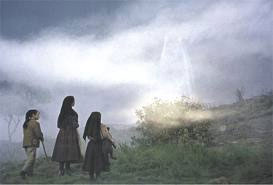 How can you pack the richness of Fatima into a little ol’blog post here?
How can you pack the richness of Fatima into a little ol’blog post here?
I discerned….you can’t. There is just so much for us to take in and ponder. For a fuller explanation of the approved private revelation I found this wikipedia article gives a fairly balanced presentation – Our Lady of Fatima.
The year is 1917: a dancing sun, an abundance of miracles, and so much more, were all given to wake up an aching world to the consequences of sin and the need to return to the heart and love of the Father, through the beautiful Immaculate Heart of Our Mother, the Blessed Virgin Mary. A message was given to 3 shepherd children…a message basically consisting of prayer, penance and devotion to the Immaculate Heart of Mary. If we can enter into these basic of all practices, our hearts would ultimately find their way “home”…to heaven and to the embrace of our loving Father. Practice of the first five Saturday devotion, frequent recitation of Our Lady’s rosary, and devotion to the Eucharist are all central elements to the experience of Fatima.
Many Roman Catholics recite prayers based on Our Lady of Fátima. Lucia later revealed that she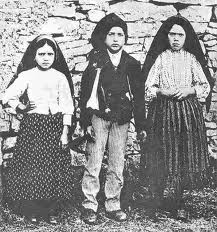 and her cousins had had several visions of an angel in 1916. Calling himself the “Angel of Portugal” and the “Angel of Peace,” he taught them to bow with their heads to the ground and to say “O God, I believe, I adore, I hope, and I love you. I ask pardon for those who do not believe, do not adore, do not hope and do not love you.” Lucia later set this prayer to music and a recording exists of her singing it. Sometime later he returned and taught them a Eucharistic devotion now known as the Angel Prayer.
and her cousins had had several visions of an angel in 1916. Calling himself the “Angel of Portugal” and the “Angel of Peace,” he taught them to bow with their heads to the ground and to say “O God, I believe, I adore, I hope, and I love you. I ask pardon for those who do not believe, do not adore, do not hope and do not love you.” Lucia later set this prayer to music and a recording exists of her singing it. Sometime later he returned and taught them a Eucharistic devotion now known as the Angel Prayer.
Lucia said that the Lady emphasized Acts of Reparation and prayers to console Jesus for the sins of the world. Lucia said Mary’s words were “When you make some sacrifice, say ‘O Jesus, it is for your love, for the conversion of sinners, and in reparation for sins committed against the Immaculate Heart of Mary.‘” At the first apparition, Lucia wrote, the children were so moved by the radiance they perceived that they involuntarily said “Most Holy Trinity, I adore you! My God, my God, I love you in the Most Blessed Sacrament.”Lucia also heard Mary ask for these words to be added to the Rosary, after the Gloria Patri prayer: “O my Jesus, pardon us, save us from the fires of hell. Lead all souls to heaven, especially those in most need.”
In the tradition of Marian visitations, the “conversion of sinners” is not necessarily religious conversion to the Roman Catholic Church, but general repentance and attempt to amend one’s life according to the teachings of Jesus.Lucia wrote that she and her cousins defined “sinners” not as non-Catholics but as those who had fallen away from the Church or, more specifically, willfully indulged in sinful activity, particularly “sins of the flesh” and “acts of injustice and a lack of charity towards the poor, widows and orphans, the ignorant and the helpless” which she saidwere even worse than sins of impurity. – wikipedia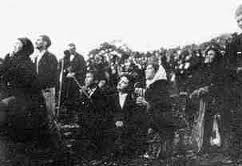
How much the Father loves us all! To allow, through the action of the Holy Spirit, an encounter with Our Blessed Mother, especially one that is so loving and nurturing. Praise God for the grace of courage, perseverance, fortitude and so much more, poured out to those 3 little children who communicated that message to the world. I am reminded of what Jesus once conveyed to St. Catherine of Siena, Doctor of the Church…that He uses the humble (like uneducated fisherman, simple women and little children) to communicate a message from heaven in order to confound the arrogant and to bring an opportunity of humility to us all.
Our Lady of Fatima, pray for us My favorite movie surrounding the mystical experience of Fatima is “The 13th Day” distributed by Ignatius Press. Â Here is another video. film “The Miracle of Fatima” Â
Tags: catholic, catholic podcast, catholic prayer
This entry was posted on Saturday, October 13th, 2012 at 12:57 am
You can follow any responses to this entry through the RSS 2.0 feed.
Lord, make me an instrument of your peace;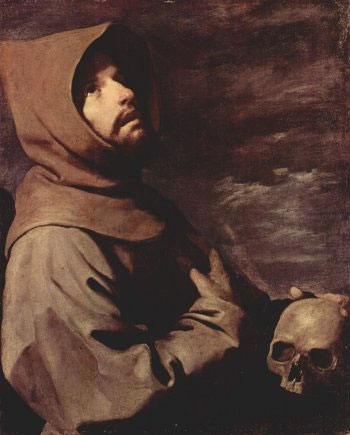
where there is hatred, let me sow love;
where there is injury, pardon:
where there is doubt, faith;
where there is despair, hope
where there is darkness, light
where there is sadness, joy
O Divine Master,
grant that I may not so much seek to be consoled as to console;
to be understood, as to understand;
to be loved, as to love;
for it is in giving that we receive,
it is in pardoning that we are pardoned,
and it is in dying that we are born to Eternal Life.
Amen.
 St. Francis of Assisi, the patron saint of animals and the ecology, was a Roman Catholic saint who took the gospel literally by following all Jesus said and did.
Who Was St. Francis?
by Leonard Foley, O.F.M.Francis of Assisi was a poor little man who astounded and inspired the Church by taking the gospel literally—not in a narrow fundamentalist sense, but by actually following all that Jesus said and did, joyfully, without limit and without a mite of self-importance.
Serious illness brought the young Francis to see the emptiness of his frolicking life as leader of Assisi’s youth. Prayer—lengthy and difficult—led him to a self-emptying like that of Christ, climaxed by embracing a leper he met on the road. It symbolized his complete obedience to what he had heard in prayer: “Francis! Everything you have loved and desired in the flesh it is your duty to despise and hate, if you wish to know my will. And when you have begun this, all that now seems sweet and lovely to you will become intolerable and bitter, but all that you used to avoid will turn itself to great sweetness and exceeding joy.”
From the cross in the neglected field-chapel of San Damiano, Christ told him, “Francis, go out and build up my house, for it is nearly falling down.” Francis became the totally poor and humble workman.
He must have suspected a deeper meaning to “build up my house.” But he would have been content to be for the rest of his life the poor “nothing” man actually putting brick on brick in abandoned chapels. He gave up every material thing he had, piling even his clothes before his earthly father (who was demanding restitution for Francis’ “gifts” to the poor) so that he would be totally free to say, “Our Father in heaven.” He was, for a time, considered to be a religious “nut,” begging from door to door when he could not get money for his work, bringing sadness or disgust to the hearts of his former friends, ridicule from the unthinking.
But genuineness will tell. A few people began to realize that this man was actually trying to be Christian. He really believed whatJesus said: “Announce the kingdom! Possess no gold or silver or copper in your purses, no traveling bag, no sandals, no staff” (see Luke 9:1-3).
Francis’ first rule for his followers was a collection of texts from the Gospels. He had no idea of founding an order, but once it began he protected it and accepted all the legal structures needed to support it. His devotion and loyalty to the Church were absolute and highly exemplary at a time when various movements of reform tended to break the Church’s unity.
He was torn between a life devoted entirely to prayer and a life of active preaching of the Good News. He decided in favor of the latter, but always returned to solitude when he could. He wanted to be a missionary in Syria or in Africa, but was prevented by shipwreck and illness in both cases. He did try to convert the sultan of Egypt during the Fifth Crusade.
During the last years of his relatively short life (he died at 44) he was half blind and seriously ill. Two years before his death, he received the stigmata, the real and painful wounds of Christ in his hands, feet and side.
On his deathbed, he said over and over again the last addition to his Canticle of the Sun, “Be praised, O Lord, for our Sister Death.” He sang Psalm 141, and at the end asked his superior to have his clothes removed when the last hour came and for permission to expire lying naked on the earth, in imitation of his Lord. From Saint of the Day
 Â
Tags: lord make me an instrument of your peace, patron saint of animals, san damiano, st francis of assisi
This entry was posted on Thursday, October 4th, 2012 at 1:37 am
You can follow any responses to this entry through the RSS 2.0 feed.
a>
Tags: angels, holy angels, nine order of angels
This entry was posted on Tuesday, October 2nd, 2012 at 12:05 am
You can follow any responses to this entry through the RSS 2.0 feed.
The Feast of the Holy Archangels
Michael, Gabriel, and Raphael
The Chaplet of St. Michael mp3 audio download
 [powerpress]
For the text of the Chaplet of St. Michael
How can you not just love the holy angels of God, and in particular the Archangels:Â Michael, Gabriel, and Raphael?
(I’ll answer that: You just have to  love them…they’re too AWESOME!)
–
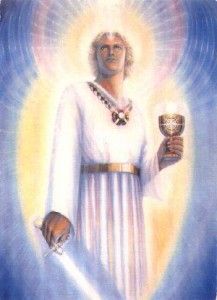 Prayer to St. Michael
Prayer to St. Michael
St. Michael the Archangel, defend us in battle, be our defense against the wickedness and snares of the devil. May GOD rebuke him we humbly pray, and do thou o’ prince of the Heavenly Host, by the power of GOD cast into hell satan and all the evil spirits who prowl throughout the world seeking the ruin of souls. Amen.
A St. Michael Website
.
 Prayer to the Archangel St. Gabriel
Prayer to the Archangel St. Gabriel
O God, who from among all your angels chose the Archangel Gabriel to announce the mystery of the Incarnation, mercifully grant that we who solemnly remember him on earth may feel the benefit of his patronage in heaven, with Jesus who lives and reigns for ever and ever. Amen.
A St. Gabriel Website
–
.
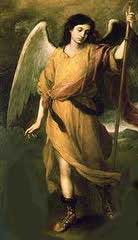 Prayer to the Archangel Raphael
Prayer to the Archangel Raphael
Glorious Archangel St. Raphael, great prince of the heavenly court, your are illustrious for your gifts of wisdom and grace. You are a guide of those who journey by land or sea or air, consoler of the afflicted, and refuge of sinners. I beg you, assist me in all my needs and in all the sufferings of this life, as once you helped the young Tobias on his travels. Because you are the “medicine of God”, I humbly pray you to heal the many infirmities of my soul and the ills that afflict my body. I especially ask of you the favor
(name it) and the great grace of purity to prepare me to be the temple of the Holy Spirit. Amen.
A St. Raphael Website
Tags: angels, Archangel St, audio, feast of the archangels, gabriel, holy angels, holy archangels, michael, michael gabriel, raphael
This entry was posted on Saturday, September 29th, 2012 at 1:01 am
You can follow any responses to this entry through the RSS 2.0 feed.
A Doctor of the Church, a distinguished Jesuit theologian, writer, and cardinal, born at Montepulciano, October 4, 1542; died 17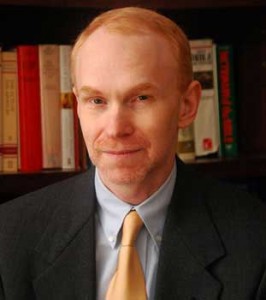 September, 1621.
September, 1621.
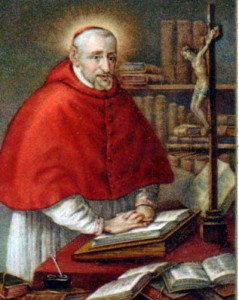 When you look up the word “prudence” in the dictionary, you may find his picture. Why? Does the name “Galileo” ring a bell. Many think they know the story…but do you? If you’ve never heard St. Robert Bellarmine’s role and thoughts on the matter, than you haven’t heard the whole story. Take a listen to Dr. Matthew Bunson break open the “Galileo issue” from a truly Catholic perspective.  Fascinating.
When you look up the word “prudence” in the dictionary, you may find his picture. Why? Does the name “Galileo” ring a bell. Many think they know the story…but do you? If you’ve never heard St. Robert Bellarmine’s role and thoughts on the matter, than you haven’t heard the whole story. Take a listen to Dr. Matthew Bunson break open the “Galileo issue” from a truly Catholic perspective.  Fascinating.
[powerpress]
For more on this great saints life check out the article found on New Advent
Tags: cardinal, catholic, catholic podcast, catholic prayer, cathollc spirituality, doctor of the church, galileo, jesuit, matthew bunson, prudence, st robert bellarmine, theologian
This entry was posted on Monday, September 17th, 2012 at 3:03 am
You can follow any responses to this entry through the RSS 2.0 feed.
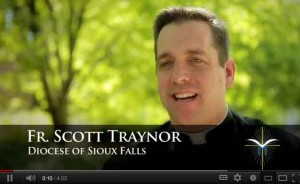 Fr. Scott Traynor from the Institute for Priestly Formation describes the 3 levels of the heart.
Fr. Scott Traynor from the Institute for Priestly Formation describes the 3 levels of the heart.
Tags: creighton university, institute for priestly formation, prayer
This entry was posted on Saturday, September 15th, 2012 at 5:39 am
You can follow any responses to this entry through the RSS 2.0 feed.
The Seven Sorrows  of the Blessed Virgin Mary
[powerpress]
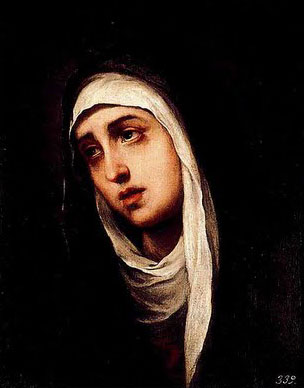 The Virgin Mary, who believed in the word of the Lord, did not lose her faith in God when she saw her Son rejected, abused and crucified. Rather she remained beside Jesus, suffering and praying, until the end. And she saw the radiant dawn of His Resurrection. Let us learn from her to witness to our faith with a life of humble service, ready to personally pay the price of staying faithful to the Gospel of love and truth, certain that nothing that we do will be lost.
The Virgin Mary, who believed in the word of the Lord, did not lose her faith in God when she saw her Son rejected, abused and crucified. Rather she remained beside Jesus, suffering and praying, until the end. And she saw the radiant dawn of His Resurrection. Let us learn from her to witness to our faith with a life of humble service, ready to personally pay the price of staying faithful to the Gospel of love and truth, certain that nothing that we do will be lost.
— Pope Benedict XVI, Angelus – September 13, 2009
Collect:
Father,
as Your Son was raised on the cross,
His mother Mary stood by Him, sharing His sufferings.
May Your Church be united with Christ
in His suffering and death
and so come to share in His rising to new life,
where He lives and reigns with You and the Holy Spirit,
one God, for ever and ever. Amen.
The Devotion from the revelation to St. Bridget of Sweden:
For more prayers for Our Lady of Sorrows
Tags: faith, Jesus, our lady of sorrows, radiant dawn, seven sorrows, st bridget of sweden, stabt mater, suffering
This entry was posted on Saturday, September 15th, 2012 at 12:46 am
You can follow any responses to this entry through the RSS 2.0 feed.
The Feast of the Exaltation of the Holy Cross
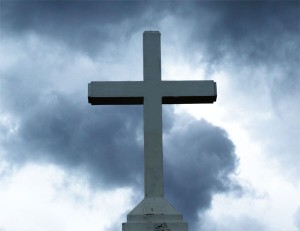 The instrument of our Master’s death is the instrument of His Triumph
The instrument of our Master’s death is the instrument of His Triumph
 It’s about the wood of the cross that hung the Savior of the world. It’s about the actual cross that was found by St. Helena on her pilgrimage in the 300’s AD and venerated for centuries. It’s about the cross around your neck, at one end of your rosary, on your wall. It’s about the sign we mark ourselves with every time we cross ourselves in the name of the Father, the Son and the Holy Spirit. It’s about all these things I suppose, and so much more. If one of the most horrific forms of execution can become transformed into the instrument of supreme redemption and life, then with God,  all things are really possible.
Behold the wood of the cross,
on which hung the Savior of the world.
Come, let us adore.
We worship you, Lord,
we venerate your cross,
we praise your resurrection.
Through the cross you brought joy to the world.
Glory to you, Jesus, Savior,
your cross gives us life.
Â
           Â
Tags: feast of the exaltation of the holy cross, pilgrimage, redemption, st helena, triumph
This entry was posted on Friday, September 14th, 2012 at 12:02 am
You can follow any responses to this entry through the RSS 2.0 feed.
[powerpress = “Vatican_Radio”]
VATICAN CITY, SEPT. 12, 2012 (Zenit.org).- Here is a translation of the address Benedict XVI gave today in Paul VI Hall at the general audience. The Holy Father today continued his reflection on prayer in the book of Revelation.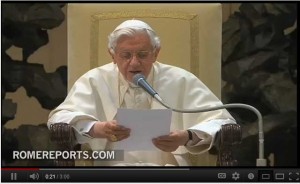
* * *
Dear brothers and sisters,
Last Wednesday I spoke about prayer in the first part of Revelation. Today we move on to the second part of the book; and whereas in the first part, prayer is oriented toward the Church’s inner life, in the second, attention is given to the entire world; the Church, in fact, journeys through history; she is part of it, in accordance with God’s plan.
The assembly that listened to John’s message presented by the reader rediscovered its duty to cooperate in the expansion of the Kingdom of God, as “priests of God and of Christ” (Revelation 20:6; cf. 1:5; 5:10) and it opens out to the world of men. And here, in the dialectical relationship that exists between them, two ways of living emerge: the first we may define as the “system of Christ,” to which the assembly is happy to belong; and the second, the “worldly systems opposed to the kingdom and the covenant and activated through the influence of the Evil One,” who by deceiving men wills to establish a world opposed to the one willed by Christ and by God (cf. Pontifical Biblical Commission, The Bible and Morality, Biblical Roots of Christian Conduct, 70).
The assembly must therefore know how to interpret in depth the history it is living, by learning to discern events with faith in order to cooperate by its action in the growth of the Kingdom of God. And this work of interpretation and discernment, as well as action, is linked to prayer.
First, after the insistent appeal of Christ, who in the first part of Revelation said seven times: “He who has an ear, let him hear what the Spirit says to the Church” (cf. Revelation 2:7,11,17,29; 3:6,13,22), the assembly is invited to ascend to Heaven, to look upon reality through God’s eyes; and here we discover three symbols, reference points from which we may begin to interpret history: the throne of God, the Lamb and the book (cf. Revelation4:1 – 5:14).
The first symbol is the throne, upon which there is seated a person John does not describe, for he surpasses every human representation. He is only able to note the sense of beauty and joy he experiences in His presence. This mysterious figure is God, God Almighty who did not remain enclosed within His heaven but who drew close to man, entering into a covenant with him; God who makes his voice — symbolized by thunder and lightning — heard in history, in a mysterious but real way. There are various elements that appear around the throne of God, such as the twenty-four elders and the four living creatures that unceasingly render praise to the one Lord of history.
The first symbol, then, is the throne. The second symbol is the book, which contains the plan of God for events and for men. It is hermetically sealed with seven seals, and no one is able to read it. Faced with man’s inability to scrutinize the plan of God, John experiences a deep sadness, which causes him to weep. But there is a remedy for man’s dismay before the mystery of history: there is one who is able to open the book and shed light on it.
And here the third symbol appears: Christ, the Lamb immolated in the sacrifice of the Cross, but who stands as a sign of his Resurrection. And it is the Lamb, Christ who died and rose, who gradually opens the seals and unveils the plan of God, the deep meaning of history.
What do these symbols tell us? They remind us of the path to knowing how to interpret the facts of history and of our own lives. By raising our gaze to God’s heaven in a constant relationship with Christ, by opening our hearts and our minds to him in personal and communal prayer, we learn to see things in a new way and to grasp their truest meaning. Prayer is like an open window that allows us to keep our gaze turned toward God, not only for the purpose of reminding us of the goal toward which we are directed, but also to allow the will of God to illumine our earthly journey and to help us to live it with intensity and commitment.
How does the Lord guide the Christian community to a deeper reading of history? First and foremost, by inviting it to consider with realism the present moment we are living. Therefore, the Lamb opens the four first seals of the book, and the Church sees the world in which it is inserted, a world in which various negative elements exist. There the evils that man commits, such as violence, which comes from the desire to possess, to prevail against one another to the point of killing one another (second seal); or injustice, as men fail to respect the laws that are given them (third seal). To these are added the evils that man must undergo, such as death, hunger and sickness (fourth seal). Faced with these oftentimes dramatic realities, the ecclesial community is invited to never lose hope, to believe firmly that the apparent omnipotence of the Evil One collides with the true omnipotence, which is God’s.
And the first seal the Lamb opens contains precisely this message. John narrates: “And I saw, and behold, a white horse, and its rider had a bow; and a crown was given to him, and he went out conquering and to conquer” (Revelation 6:2). The power of God has entered into the history of man, [a power] which is not only capable of offsetting evil, but even of conquering it. The color white recalls the Resurrection: God drew so near to us that he descended into the darkness of death in order to illumine it with the splendor of his divine life: he took the world’s evil upon himself in order to purify it with the fire of his love.
How do we grow in this Christian understanding of reality? Revelation tells us that prayer nourishes this vision of light and profound hope in each one of us and in our communities: it invites us to not allow ourselves to be overcome by evil, but to overcome evil with good, to look to the Crucified and Risen Christ, who associates us in his victory. The Church lives in history, she is not closed in on herself; but rather, she courageously faces her journey amid difficulties and suffering, by forcefully affirming that ultimately, evil does not conquer the good, darkness does not dim the splendor of God.
This is an important point for us; as Christians we can never be pessimists; we know well that along life’s journey we often encounter violence, falsehood, hate and persecution, but this does not discourage us. Above all, prayer teaches us to see the signs of God, of his presence and action; indeed, to be lights of goodness that spread hope and point out that the victory is God’s.
Tags: book of revelation, pope benedict xvi, prayer
This entry was posted on Thursday, September 13th, 2012 at 8:58 am
You can follow any responses to this entry through the RSS 2.0 feed.
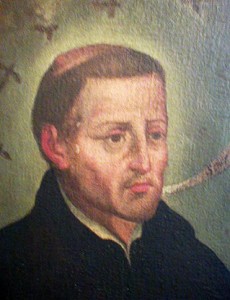 St. Peter Claver was a Jesuit who due to his life and work became the patron saint of slaves, of Colombia, and of African Americans.
St. Peter Claver was a Jesuit who due to his life and work became the patron saint of slaves, of Colombia, and of African Americans.
Claver arrived in Cartagena in 1610. By this time the slave trade had been established in the Americas for about 100 years and Cartagena was a chief center for it. Ten thousand slaves poured into the port yearly; crossing the Atlantic from West Africa under conditions so foul and inhuman that an estimated one-third of them died in transit. Although slave-trading was condemned by Pope Paul III and later labeled “supreme villainy” by Pius IX, there were fortunes to be made and it continued to flourish.
Claver’s predecessor Alfonso de Sandoval had devoted himself to the service of the slaves for 40 years before Claver arrived to continue the work, declaring himself “the slave of the slaves forever.”
As soon as a slave ship entered the port, Claver headed for the wharf and moved into its filthy and diseased hold to doctor and minister to the ill-treated and miserable human cargo. After the slaves were herded from the ship and penned in nearby yards to be
studied by crowds and buyers, Claver plunged in among them with medicines, food, bread, brandy, lemons and tobacco. With the help of interpreters and pictures which he carried with him, he gave basic instruction and assured the slaves of their human dignity and God’s saving love. During the 40 years of his ministry, Claver single-handedly catechized and baptized an estimated 300,000 of these slaves. Furthermore, Claver followed up to see that as Christians they were accorded their legal rights.
His apostolate extended beyond his care for slaves. He preached in the city square, gave missions to sailors and traders as well as country missions – returning every spring to visit those he had baptized and to follow up that they were being treated humanely. During these missions he avoided, whenever possible, the hospitality of the planters and overseers, and would lodge instead in the slave quarters.
His work on behalf of the slaves did not prevent him from caring also for the souls of the more well-to-do members of society and for the traders and visitors (including Muslims and English Protestants) to Cartagena, or for condemned criminals, many of whom he prepared for death. He was also a frequent visitor to the city’s hospitals.
Illness finally forced the saint into his room, where he lingered another four years, largely forgotten and neglected. He died on 8 September 1654. The city magistrates ordered a public funeral, at public expense, and he was buried with great pomp and ceremony.
He was canonized in 1888, and Pope Leo XIII declared him the worldwide patron of missionary work among black slaves. – Wikipedia
Dear Saint Peter Claver, you were permeated with compassion for the oppressed, for human beings sold as slaves and treated as expendable beasts. While alleviating their natural ills, you also took away their spiritual ills, and taught them the surpassing knowledge of Christ. Inspire many of our contemporaries to become self-sacrificing missionaries like you. Amen.
Tags: african americans, cartagena, pope paul iii, slave ship, slave trade, st peter claver
This entry was posted on Sunday, September 9th, 2012 at 12:06 am
You can follow any responses to this entry through the RSS 2.0 feed.
I LOVE it…the birthday of the mother of all “moms”! Happy Birthday to the dearest Mother of all. The Church celebrates 3 birthdays on the calendar…Jesus, John the Baptist, and the great Mother of God, Mary Most Holy. We celebrate the day the Immaculate Conception was brought through birth into the world.  Â
From The Catholic News Agency –
“The Catholic Church will soon celebrate the birth of the Blessed Virgin Mary on its traditional fixed date of September 8, nine months after the December 8 celebration of her Immaculate Conception as the child of Saints Joachim and Anna.
The circumstances of the Virgin Mary’s infancy and early life are not directly recorded in the Bible, but other documents and traditions describing the circumstances of her birth are cited by some of the earliest Christian writers from the first centuries of the Church.
These accounts, although not considered authoritative in the same manner as the Bible, outline some of the Church’s traditional beliefs about the birth of Mary.
The “Protoevangelium of James,†which was probably put into its final written form in the early second century, describes Mary’s father Joachim as a wealthy member of one of the Twelve Tribes of Israel. Joachim was deeply grieved, along with his wife Anna, by their childlessness. “He called to mind Abraham,†the early Christian writing says, “that in the last day God gave him a son Isaac.â€
Joachim and Anna began to devote themselves extensively and rigorously to prayer and fasting, initially wondering whether their inability to conceive a child might signify God’s displeasure with them.
As it turned out, however, the couple were to be blessed even more abundantly than Abraham and Sarah, as an angel revealed to Anna when he appeared to her and prophesied that all generations would honor their future child: “The Lord has heard your prayer, and you shall conceive, and shall bring forth; and your seed shall be spoken of in all the world.â€
After Mary’s birth, according to the Protoevangelium of James, Anna “made a sanctuary†in the infant girl’s room, and “allowed nothing common or unclean†on account of the special holiness of the child. The same writing records that when she was one year old, her father “made a great feast, and invited the priests, and the scribes, and the elders, and all the people of Israel.â€
“And Joachim brought the child to the priests,†the account continues, “and they blessed her, saying: ‘O God of our fathers, bless this child, and give her an everlasting name to be named in all generations’ . . . And he brought her to the chief priests; and they blessed her, saying: ‘O God most high, look upon this child, and bless her with the utmost blessing, which shall be for ever.’â€
The protoevangelium goes on to describe how Mary’s parents, along with the temple priests, subsequently decided that she would be offered to God as a consecrated Virgin for the rest of her life, and enter a chaste marriage with the carpenter Joseph.
Saint Augustine described the birth of the Blessed Virgin Mary as an event of cosmic and historic significance, and an appropriate prelude to the birth of Jesus Christ. “She is the flower of the field from whom bloomed the precious lily of the valley,†he said.
The fourth-century bishop, whose theology profoundly shaped the Western Church’s understanding of sin and human nature, affirmed that “through her birth, the nature inherited from our first parents is changed.” – CNA
Tags: birth of the blessed virgin mary, blessed virgin mary, happy birthday, immaculate conception, Jesus, mary our mother, mother, mother of god, nativity of the blessed virgin mary, protoevangelium of james
This entry was posted on Saturday, September 8th, 2012 at 12:59 am
You can follow any responses to this entry through the RSS 2.0 feed.
Vatican City, 5 September 2012 (VIS)
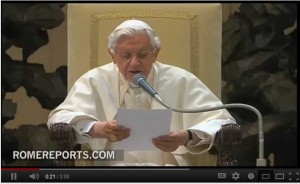
 – Benedict XVI today resumed his general audiences in the Vatican, having held them at Castelgandolfo during the month of August. Meeting with faithful in the Paul VI Hall he turned his attention to prayer in the Book of Revelation which, he explained, “presents us with the living breathing prayer of the Christian assembly, gathered together ‘on the Lord’s day'”.Revelation, Pope Benedict went on, “is a difficult book, but one of great richness. … In it a reader presents the assembly with a message entrusted by God to John the Evangelist. … From the dialogue between them a symphony of prayer arises which is then developed in many different forms up until the conclusion”.The first part of Revelation presents us with the assembly in prayer in three successive phases. The first of these highlights how “prayer is, above all, a listening to God Who speaks. Engulfed as we are by so many words we are little used to listening, and especially to adopting an interior and exterior attitude of silence so as to attend to what the Lord wishes to say to us. These verses also teach us that our prayers, often merely prayers of request, must in fact be first and foremost prayers of praise to God for His love, for the gift of Jesus Christ which brought us strength, hope and salvation. … God, Who reveals Himself as the beginning and the end of the story, welcomes and takes to heart the assembly’s request”.This first phase also includes another important element. “Constant prayer revives in us a sense of the Lord’s presence in our life and history. His presence supports us, guides us and gives us great hope. … Prayer, even that pronounced in the most extreme solitude, is never a form of isolation and it is never sterile, it is a vital lymph which nourishes an increasingly committed and coherent Christian existence”.In the second phase of the prayer of the assembly “the relationship with Jesus Christ is developed further. The Lord makes Himself visible, He speaks and acts, and the community, increasingly close to Him, listens, reacts and accepts”.In the third phase “the Church in prayer, accepting the word of the Lord, is transformed. … The assembly listens to the message, and receives a stimulus for repentance, conversion, perseverance, growth in love and guidance for the journey”.“The Revelation”, Benedict XVI concluded, “presents us with a community gathered in prayer, because it is in prayer that we gain an increasing awareness of Jesus’ presence with us and within us. The more and the better we prayer with constancy and intensity, the more we are assimilated to Him, and the more He enters into our lives to guide them and give them joy and peace. And the more we know, love and follow Jesus, the more we feel the need to dwell in prayer with Him, receiving serenity, hope and strength for our lives”.
[powerpress = Â Vatican_Radio]
Tags: book of revelation, pope benedict xvi
This entry was posted on Wednesday, September 5th, 2012 at 5:26 pm
You can follow any responses to this entry through the RSS 2.0 feed.

